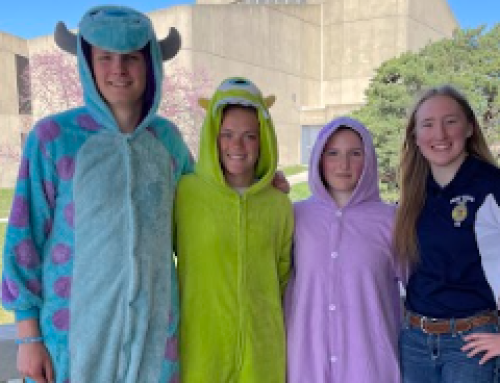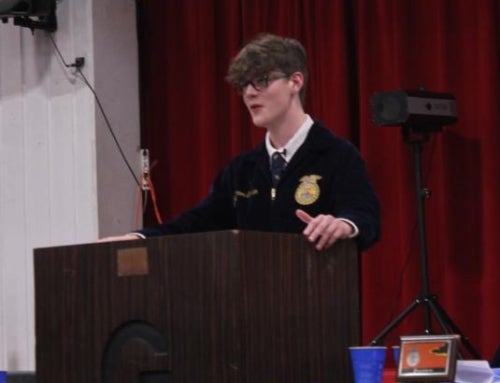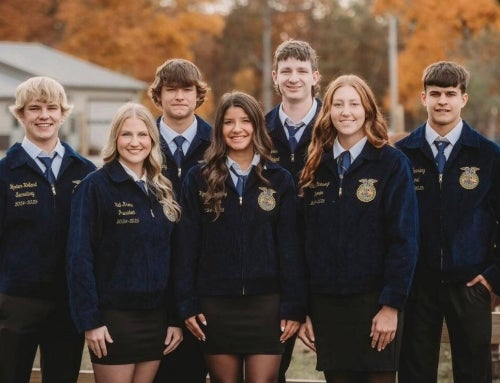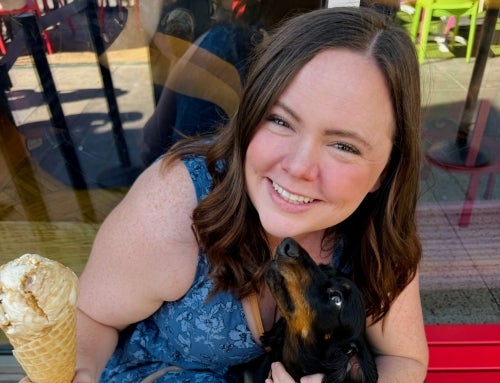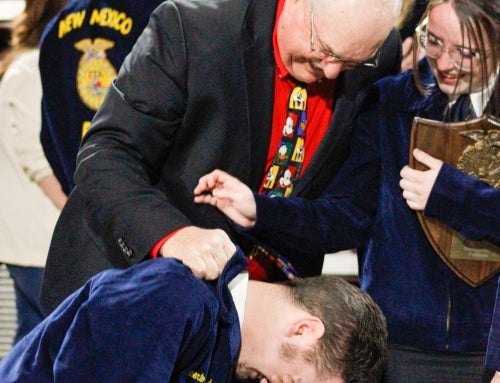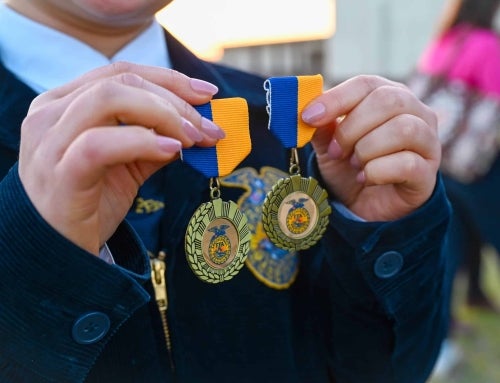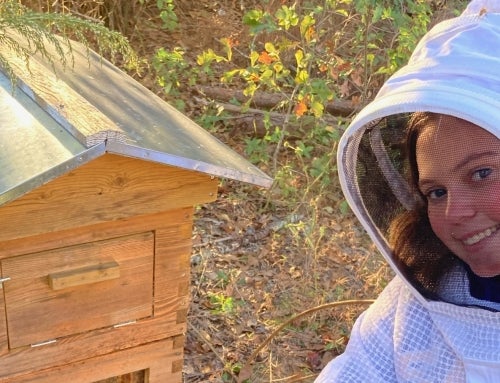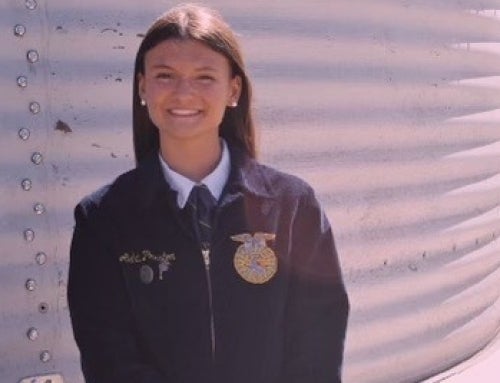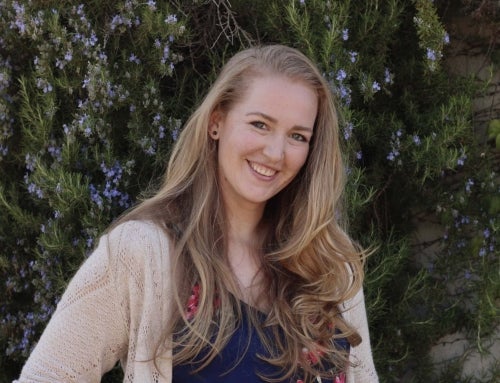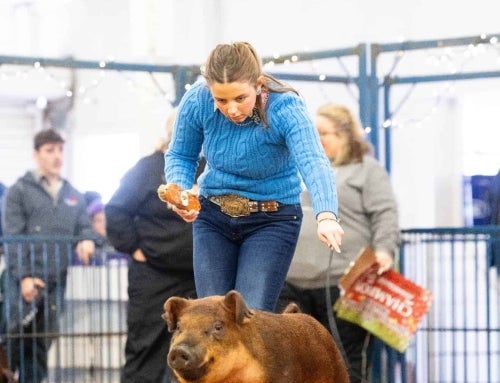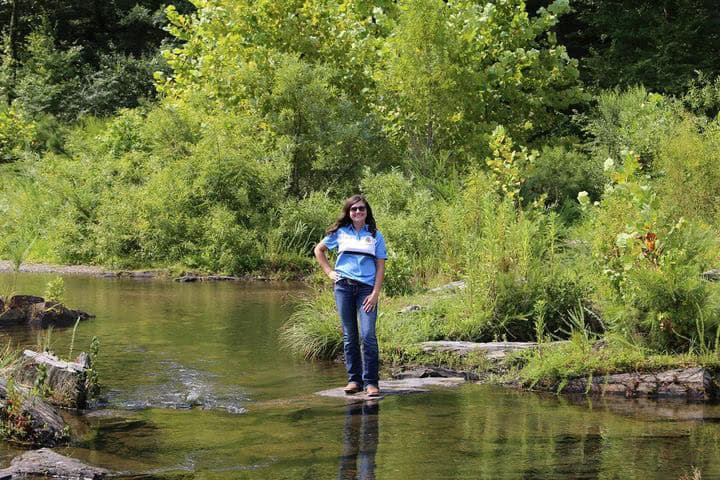
Coweta FFA Secretary Channing Anderson smiles for her FFA picture.
The buzz is going around about an FFA member with a passion for bees. Channing Anderson is a Coweta FFA member from Oklahoma with a white suit, lots of honey and a unique Supervised Agricultural Experience (SAE).
A hobby started by her father seven years ago, Anderson’s project is more than a pastime. Anderson is the proud caretaker of three bee hives and thousands of bees. Along with collecting honey to eat and sell, Anderson uses beeswax to make and market lotions and chapsticks.
Honeybees require special care due to the caution demanded when working with them. To begin a day of work with the bees, Anderson puts on her white bee suit, which protects her from head to toe. The garb is necessary for smoking the bees.
When smoked, the bees consume a large amount of honey, as they believe fire is nearby and they want to be prepared. They become so full of honey that it becomes extremely difficult for them to sting. Anderson uses this opportunity to check for overcrowding in the hives and finds the queen bee. If there is overcrowding, she must split the hive by moving the queen to another spot, and half of the bees in that hive will follow.
She repeats this process every couple of months. In July or August, she collects honey from the hives.
The process of collecting honey is technical. Anderson must ensure the bees are left with enough honey to feed on through the winter, which is typically about 100 pounds. She collects any excess for home and market use.

Anderson in her bee suit, checking the bees.
“The bees will fly up to three miles a day to pollinate and get nectar,” she says. “It’s truly amazing.”
Anderson keeps a garden nearby to guarantee the bees have access to nectar at all times, but often the bees search for new plants to pollinate. The flowers and plants they get nectar from determine how the honey looks, tastes and smells.
One byproduct of honeybees is beeswax. The wax makes up the honeycomb, and Anderson collects it and melts it down. She mixes the wax, which is extremely hydrating, with other ingredients to create lotions and chapsticks. Anderson has experimented with other products like candles as well.
Anderson hopes to continue working with bees during and after college.
“While I have had honeybees, I learned many things but the main thing I have learned is how important honeybees are,” she says. “Honeybees alone pollinate 80% of all fruits and vegetables, so without them, we wouldn’t have all of the fruits and vegetables we have today. Honeybees play a very important part of everyone’s life.”
Anderson and her SAE are a part of the future of agriculture, our health and our tastebuds.


